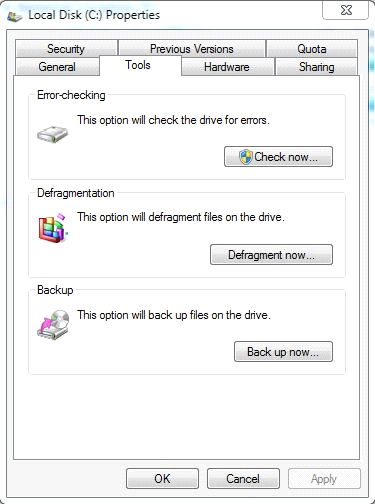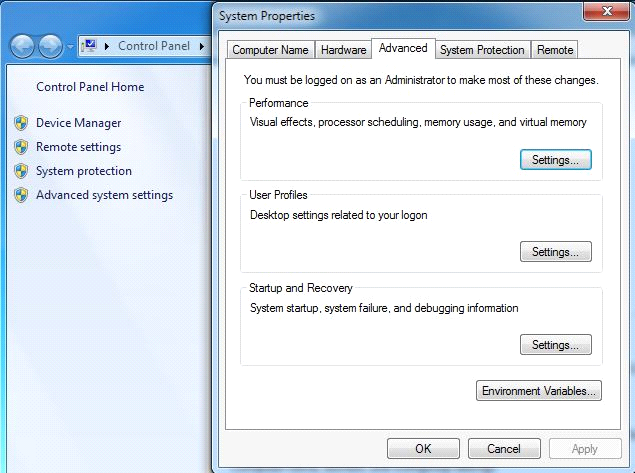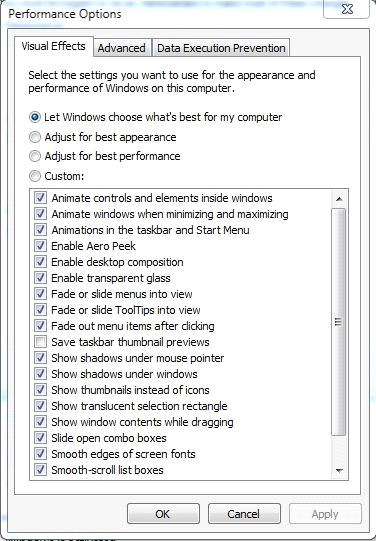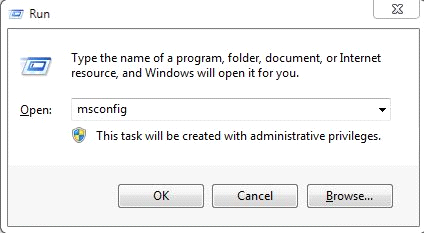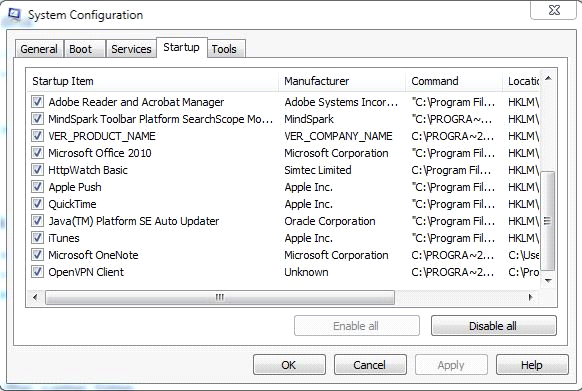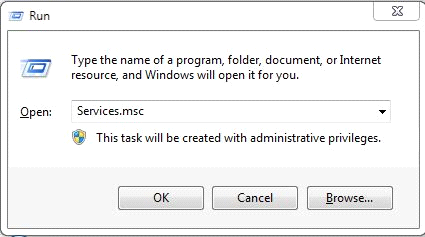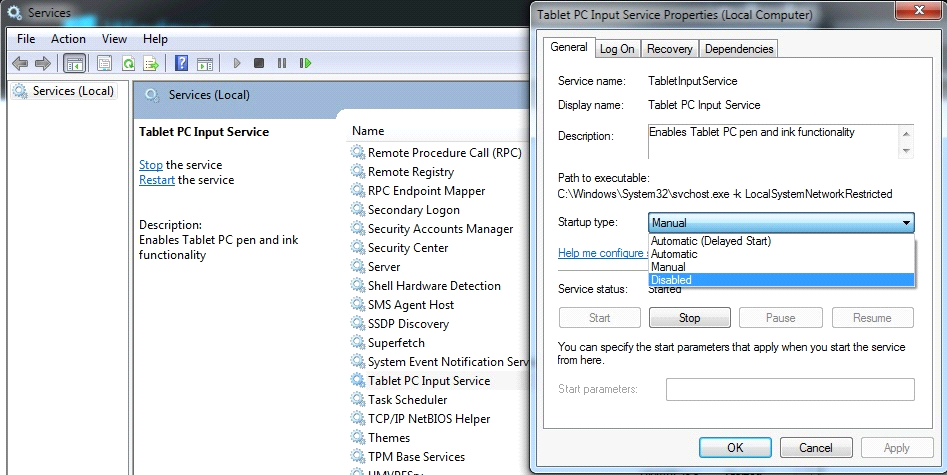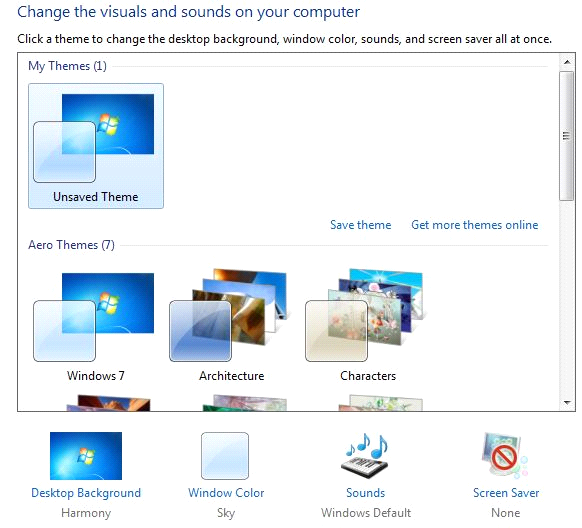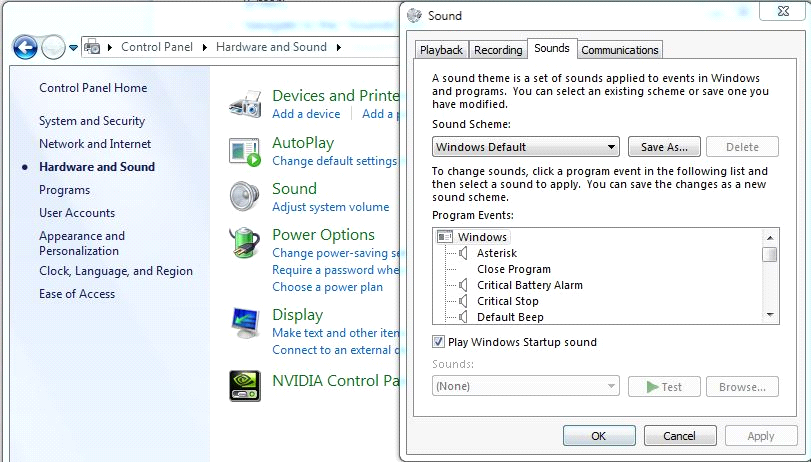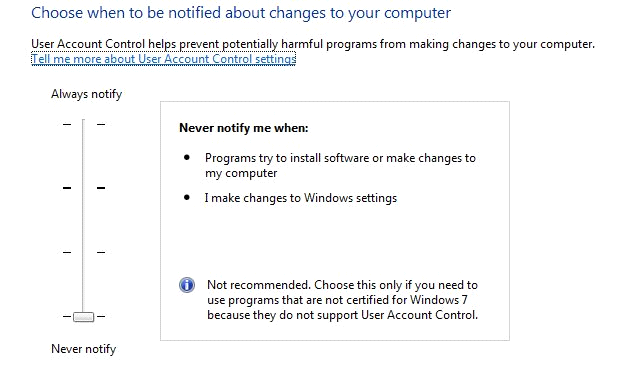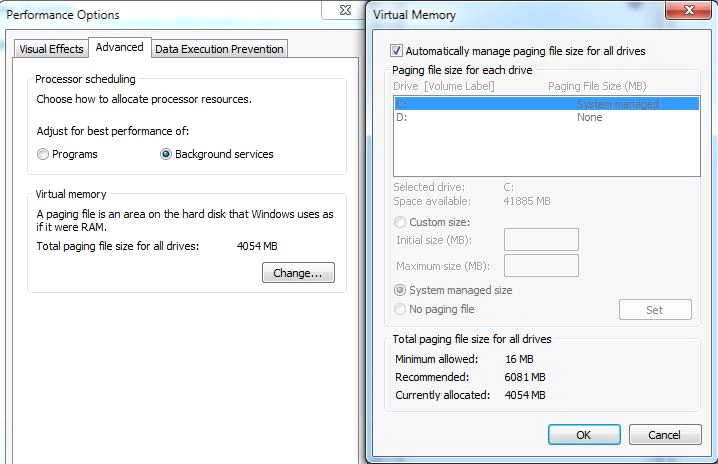15 TIPS TO INCREASE
WINDOWS SPEED ON
YOUR PC WITHOUT ANY SOFTWARE

1 Remove more than one antivirus
if you use more than one antivirus or antispyware program at the same time, your computer may experience decreased performance, become unstable, or restart unexpectedly.
Caution:
When you remove your currently installed Internet security programs, your computer may be in an unprotected state.
Make sure you have an Internet security program running on your computer at all times.
Tip:
You will need to restart your computer while following these instructions. Write them down, print them, or bookmark this page (mark it as a Favorite) to make it easier to find this topic again.
Step 1: Remove antivirus or antispyware programs
- In Windows XP, click Start, click Run, type appwiz.cpl, and then press Enter.
-or-
In Windows Vista, click Start. In the Start Search box, type appwiz.cpl, and then press Enter.
-or-
In Windows 7, click Start. In the Search programs and files box, type appwiz.cpl, and then press Enter.
-or-
In Windows 8, Swipe in from the right edge of the screen, tap or click Apps and then tap or click Search (or if you're using a mouse, point to the upper-right corner of the screen, move the mouse pointer down, and then click Search).Type appwiz.cpl in Search box, and tap Appwiz.cpl on the left side of your screen.
- In the list of installed programs, uninstall any other Internet security programs.
- Restart your computer.
2.close programme in notification panel
Some programs add an icon to the notification area on the taskbar. Look there to see whether there are any programs running that you do not want to start automatically. Point to each icon to see the program name. To make sure that you can see icons for all the running programs, click the Show hidden icons button shown in the following image.

3.View the start folder
Some programs include themselves in the Startup folder so that they start automatically every time that you start Windows.
To see all programs that run at startup, click the Start button , click All Programs, and then click Startup.
, click All Programs, and then click Startup.
If you see any programs in this folder that you are certain you do not want to run when Windows starts, right-click the icon for that program, and then click Delete.
4.Use system configuration
System Configuration is a tool that helps you identify the programs that run at startup. System Configuration is not meant to work as a startup management tool, but you can use System Configuration to determine whether a program that runs at startup is slowing down your computer.
Important: If you disable programs that normally run at startup, related applications may start more slowly or not run as expected. If you are not sure what a program in System Configuration does, do not disable the program.
- To open System Configuration, click Start , click Control Panel, click System and Security, click Administrative Tools, and then double-click System Configuration.
 If you are prompted for an administrator password or confirmation, type the password or provide confirmation.
If you are prompted for an administrator password or confirmation, type the password or provide confirmation.
- In System Configuration, click the Startup tab
5. Run disk cleanup, Defrag and check disk
These tools are used to speed up the performance of your
hard disk. To achieve this, right click on the desired partition
(where the OS is installed) and then click “Properties”. Now
select the “Tools” tab and click on one of the tools listed
here:
The “Disk defragmentation tool” will align data blocks written
on your hard drive in order to make them easier to be
accessed by the OS. The “Error-checking” tool will fix any
bugs from your hard-disk. I prefer running the command line
tool rather than using the GUI. Open “command prompt”
and type the following:
The “/r” parameter will locate bad sectors and will recover
readable data, but also will fix disk errors.
Note that these tools will take a while to finish their operation.
The “Disk Cleanup” tool is used to delete unnecessary data
stored on your computer, such as temporary internet files,
thumbnails, debug dump files, etc. To open this tool simply
type “Disk Cleanup” in the search bar. You will then be
prompted to enter a disk partition on which the tool will
execute. After calculating the disk space gained, you will be
redirected to the following screen:
Check all the things that you want to remove and then click the “OK” button.
6. Disable unnecessary visual effects
As you may already know, Windows comes by default with
some visual effects activated. Features like Windows Aero,
shadows or thumbnails can be disabled to boost your
computer’s performance. Right click “My Computer” and
then select “Properties”. After the window opens, click the
“Advanced system settings” button from the right side. You
will then be prompted to the following screen:
In the “Performance tab” click the “Settings
” button. Next, select an option from the ones
available. You can adjust your settings for
“best performance”, “best appearance” or
select the features that you want to activate
one by one:
7. Update Windows with the latest definitions
One important step in optimizing your
computer’s performance is by installing the
updates must be applied so that you can
better prevent and fix bugs, errors, malicious
software installation or intrusions. Note that
Microsoft often releases updates to fix some
known bugs that exist on a fresh Windows
installation. Some of these updates can even
fix and optimize performance issues.
To install the latest updates go to “Control
Panel\System and Security\Windows Update”
and then click “Check for updates” button.
Wait until Windows finds all available updates
and then select the ones that you want to
install. In the end, you will probably have to
restart your workstation.
8. Disable unused programs that run at
startup
Remember that your computer may probably run software
that is not needed all the time. Some of these programscan
be disabled to increase speed. For achieving this, I prefer
using the Microsoft System Configuration Utility tool. You
can run it by typing “Msconfig” from the run prompt:
Navigate to the “Startup” tab and then deselect the
programs that are not mandatory:
For instance, iTunes, QuickTime and Adobe Manager can be
disabled to improve your computer’s performance.
Remember that these programs may run in the back, so as a
user you may not be aware of the running processes.
9. Disable unused Windows Services
You can also optimize computer’s performance by disabling
unused Windows services. By disabling them you increase
the available RAM memory and CPU. Open the "Services"
console in any way you prefer (I’m used to open the Services
console by typing Services.msc from the run prompt):
Select the services that you want to disable, right click them
and then select "Properties". From the following window you
can set the service "Startup type" to "Disabled". Check the
following image:
Services like Tablet PC input Service or Windows Indexing
Service can be disabled if you don’t need them.
9.Scan your computer for malware
In many occasions, your computer can have low
performance because it may be infected with viruses. The
best method of dealing with viruses is by installing an
antivirus program and run it on a regular basis. In Windows
7, you can install Microsoft Security Essentials for free and it
will do the job perfectly. You can always choose another
security software such as AVG, Nod32, Kaspersky, etc.
I also use “Malwarebytes” to scan for malware. This tool can
be used for free a period of time before registering or buying
it. I’ve worked with this software and I would it recommend
to anyone. Many of the malware exited on my computer were
detected and cleaned using this tool.
10.Use CCleaner or any other optimizing software
This tool is very powerful and can be used to significantly
improve your computer’s speed. It is a freeware software
available for download from
This program will scan all areas of your
computer and will clean and fix things like registry keys,
temporary files, recycle bin, history and cookies etc.
You can use advance system optimizer
pc optimizer
11. Uninstall any unwanted program
I recommend that you uninstall any unused programs from
your computer. By doing this, registry keys are cleaned,
hard disk space is increased, running processes are
reduced and overall computer’s performance is increased.
You can uninstall software from your computer by using any
third party programs like “Revo Uninstaller” or simply by
using the “Uninstall” feature available in Windows 7. To do
this, open “Control Panel” go to “Programs” and then Click
“Uninstall a program” from the available options. From the
list select any software that you do not use and click
uninstall. Be careful because uninstalling any software
used by your OS may result in a system crush.
12. Disable the Screen Server and the Wallpaper
You can turn off these visual effects if you don’t need them
. To achieve this, right click your Desktop and select
“Properties”. You can select a solid color as a Wallpaper and
disable the Screen Server from running on your computer.
13. Disable unnecessary Windows sounds
Remember that Windows audio effects use your computer’s
resources so if you disable some of them, you can increase
the performance of your workstation. Open “Control Panel”
navigate to the “Hardware and Sounds” menu and then click
the “Sound” button. Select and disable the desired sounds from the list:
14. Disable UAC (***Advanced Users Only!)
If you are a computer Administrator, you should disable
UAC for boosting performance. UAC is a notification
mechanism used to prevent malicious changes to your
system.
15. Increasing the page file and
allocating memory for Background
services
You can choose how the processor allocates resources by
selecting the “Background service” option rather than
“Programs”. You can also opt for increasing the size of the
page file. The page file is used by Windows similar to RAM
so increasing it would probably increase your computer’s
performance (if needed). I usually don’t change the size of
the page file because Windows will select the required size
automatically. Check the “Automatically manage paging files
for all drivers” feature from the Virtual Memory menu.
WHEN THESE STEPS FOLLOW YOUR WINDOWS
PERFOMANCE INCREASES
THANKS FOR READING..............................
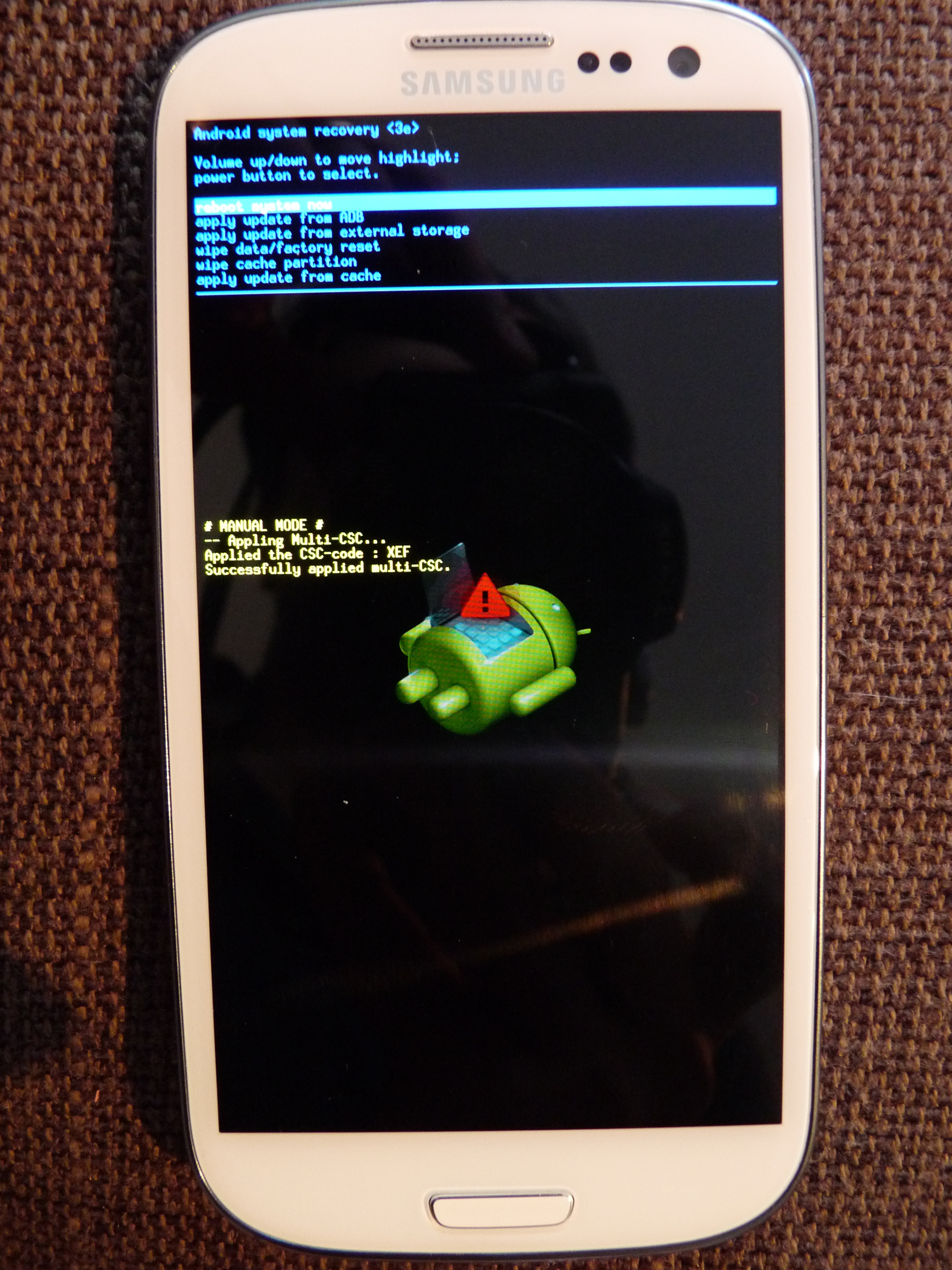



 , click All Programs, and then click Startup.
, click All Programs, and then click Startup.
 If you are prompted for an administrator password or confirmation, type the password or provide confirmation.
If you are prompted for an administrator password or confirmation, type the password or provide confirmation.